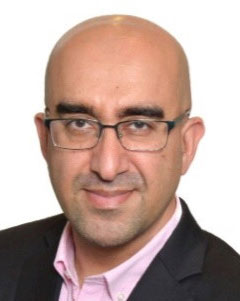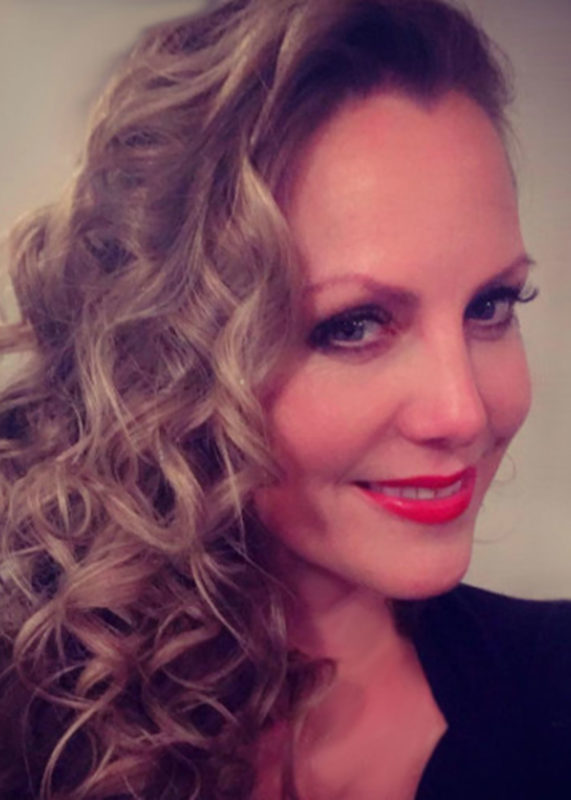The changing data and analytics ecosystem requires insights teams to adapt rapidly and dramatically. We asked leading insights professionals at Procter & Gamble, Philips Beauty and Merck & Co., Inc. how they approach the challenges.
In a tech-driven environment, the insights industry is changing faster and more profoundly than ever. For the insights teams at major multinational companies, the climate can be particularly challenging. They must extract actionable learnings out of the vast amounts of data and translate these to the boardrooms. For this they need to keep up-to-date with the latest technology, as well as create highly-skilled, multi-disciplined teams. So where to start?

“The foremost step for insights teams is to embrace the understanding that ever since the birth of market research we have always been in the pursuit of data acquisition and mining.” This advice comes from Vinay Ahuja, Director – Procter & Gamble European Market Operations, Consumer Market Knowledge, Analytics & Insights. He takes us back in history, describing how “the development of the Insights profession has always been closely tied to the use of technology for capturing data and distilling insights. Each stage of computing technology – from punched cards, relational databases, NoSQL, CATI, even ‘simple’ video recordings, mobile computing, etc. – has been a continuing yet exponential evolution of the ability to capture ever larger data. It’s important that all who are committed to a career in Insights, ground themselves in the role that technology, data and analytics have played over more than 150 years.”
Fusing boundaries
At P&G Ahuja and his people have made a very big transformation to integrate data, analytics and insights, and he feels they are well advanced on their journey. “We have invested tremendously over a sustained period, building capabilities in domains of data and analytics as well as human insights.” The next step was to unify the work and deliverables. P&G’s insights and analytics professionals have been fused into one seamless community, one organisation, for several years now. “The exciting and pivotal possibility that the data, analytics and technology offer is to translate the insights into broadscale activation on our brands.”
The analytics and insights teams at P&G work hand in hand with the marketing, sales and technology teams. The objective is not just to mine the data to uncover insights, but also to design and deliver brand propositions to reach tens of millions of consumers at scale. “We are fusing the boundary between insights discovery, the design and activation of our brand programmes.”
Culture of learning

At Philips, marketing and user data analytics are at the very heart of insight generation. After all, they are real time, come from real consumers, and express the evolving needs of the target groups, explains Anna-Sterre Mees Senior Global Consumer & Marketing Intelligence Lead, Philps Beauty. “This means that marketing decisions need to leverage big data insights. Hence, data and analytics ecosystems are a means to an end. The business questions are the true drivers which we can now answer in more depth, more validated and faster due to new technologies, such as AI.”
This does do not stand in isolation at Philips, as the insights teams also need to understand the ‘why’, or the ‘thick data’, in order to provide meaningful context and nuances. For Mees’ department this means building new capabilities in advanced analytics and implementing a test and learn approach (e.g. a data lab and digital experimentation), to ensure strong business impact.
Ahuja underlines that it’s crucial to foster a culture of learning. This has two different aspects, he explains. One is the potential of granular data to learn about consumer experiences, and how his team tests and designs experiments. “This is changing our work in insights significantly.” The other aspect of learning is personal development in the age of data and technology. Here P&G has significantly accelerated the pace of advancement of learning on data, analytics and digital skills. “Our analytics and insights professionals are highly committed to an intense, even challenging upskilling programme that spans multiple domains. It includes learning data science skills, advanced analytics as well as cutting-edge deep human insight discovery methods besides the softer leadership, influence and storytelling skills. We are actively working to transform ourselves. To reinvent. To reimagine our future in this exciting time.”
Fear and inertia
Recognising the need for change is only the start. In adapting there are many challenges. One of them is habit, says Lisa Courtade, Head of Global Customer Insights at Merck. “We are often victims of our own success. We build our careers and our achievements upon what we know and our expertise in certain methods and approaches. The problem with this is that we can be blinded by our own knowledge and biases. As they say: what got you here, won’t get you there.”

Courtade has over 20 years of success in delivering customer insights that drive business results. She appreciates that most people feel an inherent risk in embracing something new, trying a different approach, moving outside the comfort zone. “And let’s be honest, teams are increasingly stretched. There are more demands upon them than ever to be polymaths; moving across platforms and methods as data and methodological experts, synthesising insights across disparate sources, and bringing insights to life as storytellers and business strategists.” She explains that the prospect of having to learn something new, and then sell it to marketing or business teams who may also be very comfortable with what they’ve done in the past, can feel overwhelming. “I often hear researchers across companies pointing to legal, or procurement, or their business teams as the obstacles to their adoption of new technologies. But if we’re truly honest with ourselves, I believe that fear and inertia, and more than a little hubris, are really our biggest challenges.”
Virtuous cycle
“The pace of change appears
to be so fast, it is easy to be paralyszed,”
says Ahuja. “Where does one start to embrace the change? That’s a real
challenge. The many things to learn can make the new world look daunting.” His tip
for our readers is to match their ‘upskilling journey’ with their business
challenges. He recommends the following starting points: 1. Which areas would
your organiszation
benefit most from activation of data and analytics capabilities? 2. Where can
you make the biggest difference to the purpose and results of your organiszation?
“Focus on these first and then call out the specific skills needed. Learn the
skills, apply them, see and let the impact be seen. Nothing spirals faster than
a virtuous cycle.”
Ahuja knows several people who have transformed themselves as real experts in analytics, even though they’ve never taken a maths course after university. He also knows others who are engineers by training but who have just not embraced the opportunity. Like Courtade, he identifies the challenges for people to understand what will take them further. “Recognise that learning must be permanent and that knowledge is effervescent. You are only as good as what you learnt yesterday. My personal motto is to pick a couple of topics or skills every year and get deep into them. You will get more passionate about some than others as you discover them better.”
Hammering nails

In order for data driven
insights and analytics to support decision–making,
it’s vital to put the consumer at the heart of everything, says Fenny Leautier, Senior
Director Strategic Marketing & Consumer Insights at Philips Personal Care. “This means stakeholders have
consumer insights at their fingertips.” She also recommends the creation of an
easily accessible consumer insights platform throughout businesses and
departments. We have one source of truth. This prevents duplication,
fragmentation, and leverages existing knowledge effectively throughout the
organiszation.
It also ensures a follow-through.” Finally, Leautier and her team produce a quarterly
consumer insights programme review. “This ensures that the
insights deliver upon the business needs.”
Courtade is a fan of hybrid or agile teams that bring together diverse skills and functional expertise to solve a common challenge. “For too long most corporations have operated in silos where we essentially compete with other functions to be the first to deliver the insight or take credit for a successful business initiative. We also tend to default to the tools that we know. If you are in the business of hammering nails, every problem is a nail, and every solution is a hammer.” In hybrid teams – where designers, data scientists, storytellers and strategists amongst others, collaborate to solve common challenges, she feels that the outcome is much more robust and actionable than when four people work independently.
Raining data
In Courtade’s view, putting the business challenge in the centre and having all hands on deck, is the best way for insights teams to truly discern the best tools and approaches for the challenge. “And I don’t think there is a single best tool for each decision, its usually a mix of approaches. Often traditional ones as well as emerging tech, and a synthesis of data give us the ‘what’, whilst primary research gives us the ‘why’ and the human motivations and drivers. Data and insights leaders and professionals best support the business when they are methodologically agnostic and embrace all of the people and tools at their disposal in the service of the business.”
They’ll need to do so quickly. Both the pace and the nature of change in the insights industry are relentless. The transition has never felt faster to Ahuja, yet it’s also multi-disciplinary, he observes. “This is certainly a very exciting opportunity and a challenge. It is raining data, yet we are often still thirsty for insights.” He knows that some have quickly embraced the new reality. After all, data, analytics and computing have played a very big part in the profession’s history. “A career in insights or market research was never more than an arm’s length away from analytics and the world of big data. At each stage data kept becoming bigger that we had to finally had to call it Big Data. And alongside evolved the tools to parse it. He feels that it’s time therefore to refresh the understanding of the profession’s history and accept that data and analytics always was a critical pillar of this work, and will become even more important in the future. “Accept the reality and embrace the change.”
Key challenges
Philips’ Fenny Leautier identifies three key challenges in adopting new ways:
1. Unlocking data.
“By default, data is stored in different places and needs to be connected at all times.”
2. Embracing new tools that are available from digital marketing and other consumer data sources.
“We need to transform from consumer researchers who execute projects, to consumer insight partners, leveraging all data to connect the dots and synthesise them in impactful insights.”
3. Experimentation with data-providing tools.
“These can help get to the heart of real time user and consumer data and improve speed, (cost) efficiency and efficacy.”


